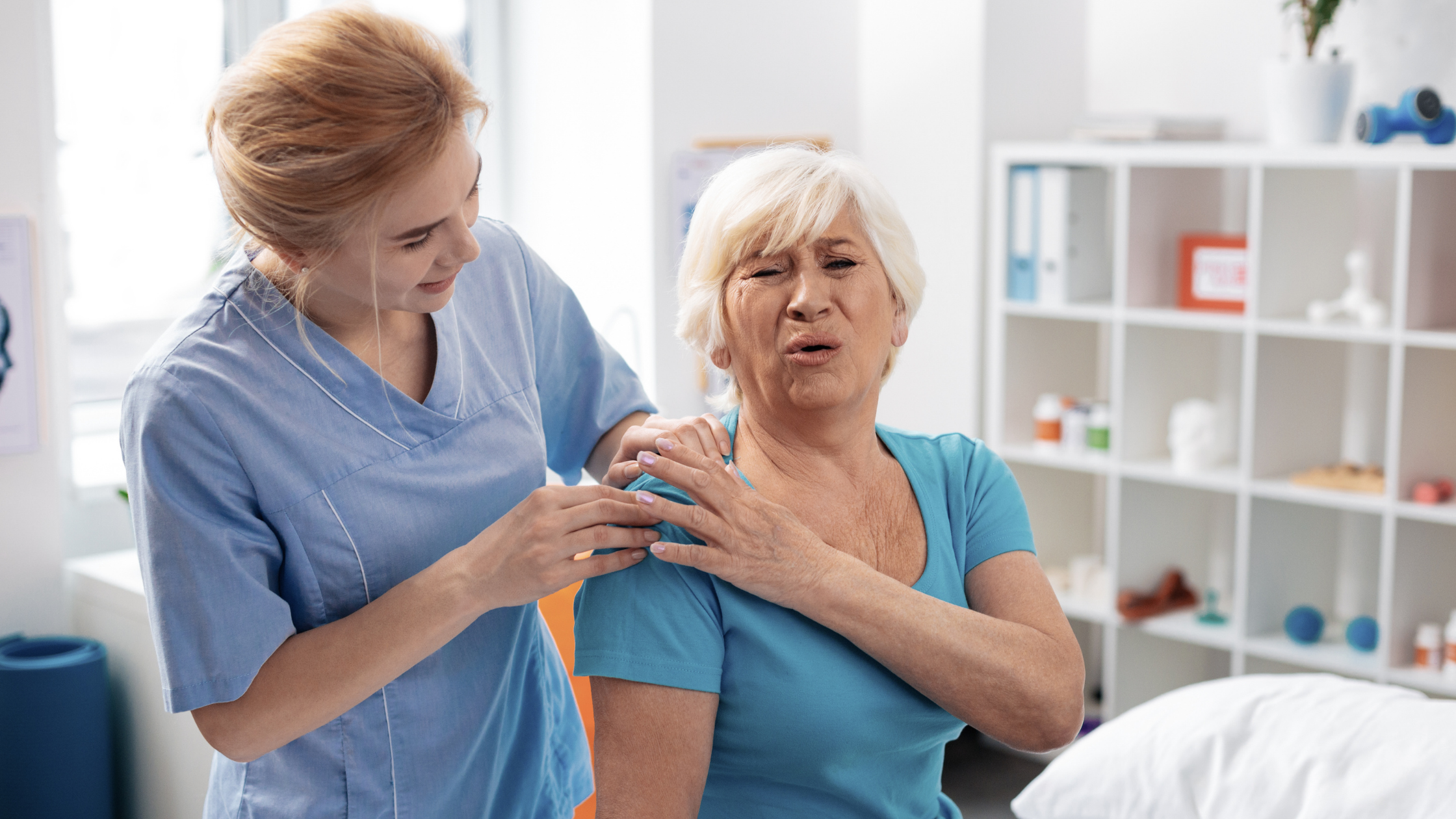
06 Dec What Are Acromioclavicular Sprains?
Does your shoulder hurt with every movement? Even if you don’t notice any bruising or swelling, you should not ignore this pain. You may have an acromioclavicular (AC) joint sprain, and if you don’t seek prompt treatment, it may only get worse. Healing a shoulder sprain can take time and
patience, but our team at New York Sports Medicine Institute is here to help. Continue reading to discover more about AC joint sprains and how we can help!
What Is The Acromioclavicular Joint?
The acromioclavicular (AC) joint makes up part of the shoulder structure and is the point where the collarbone meets with the shoulder blade. AC joint sprains occur when one or more of the ligaments in the shoulder becomes strained or partially torn. Typically, these sprains are caused by a direct blow to the shoulder, a sudden twist or fall on an outstretched arm, or excessive stress on the joint. Athletes who participate in contact sports are at higher risk of suffering an AC sprain, but the injury can occur while engaging in any activity with extended arm motions, such as tennis or golf. Some of the symptoms of a shoulder sprain include pain, tenderness, swelling, instability of the shoulder joint, and bruising. Like other ligament injuries, AC joint sprains are classified by the extent of the injury:
● Grade 1- Involves spraining of the joint capsule with no damage to the ligaments connecting your shoulder blade to your collarbone.
● Grade 2 – Stretching of the ligaments and tearing of the joint covering connecting the shoulder blade and collarbone. This can often result in a permanent bump at the AC joint.
● Grade 3 – Tearing of the joint capsule and ligaments in the shoulder. It can cause a moderate permanent bump.
● Grade 4 – Significant backward displacement of the collarbone.
If you’re experiencing shoulder pain and think you may have a sprain, visit New York Sports Medicine Institute. Our orthopedic experts can perform a physical examination to confirm the diagnosis and recommend an appropriate treatment plan.
AC Joint Sprain Treatment
The main goals of AC joint sprain treatment are to reduce pain, promote healing, and restore shoulder strength and mobility. Depending on the severity of the AC sprain, your doctor may prescribe medication or physical therapy to manage your symptoms. For more severe sprains,
surgery may be necessary to restore the integrity of the ligament or reconstruct the joint. Our orthopedic surgeon is well-versed in several shoulder procedures and will determine the right treatment plan to restore function in your shoulder. In addition to medical treatment, there are some self-care measures you can take to reduce pain and speed up healing. These include:
● Resting your shoulder; avoid activities that cause pain or discomfort.
● Applying ice for 15 minutes at a time several times a day.
● Taking over-the-counter pain medication to manage discomfort.
● Doing gentle range of motion exercises and stretches once the pain has decreased.
With prompt diagnosis and proper treatment, most AC joint sprains can heal fully in 6-8 weeks. To prevent future injury, focus on strengthening your shoulder muscles with resistance training and improving your flexibility through stretching. Finally, if you’re involved in contact sports or activities with a high risk of falls, make sure to wear protective gear such as shoulder pads and helmets. By taking these steps, you can ensure your shoulder is able to keep up with your active lifestyle for years to come.
Contact Us
An acromioclavicular sprain can interfere with your sports performance and daily routine, but New York Sports Medicine Institute is here to help! Our knowledgeable orthopedic specialists will carefully evaluate your symptoms and devise a treatment program to get you back on track. Be sure to contact us today to learn more and request an appointment!

